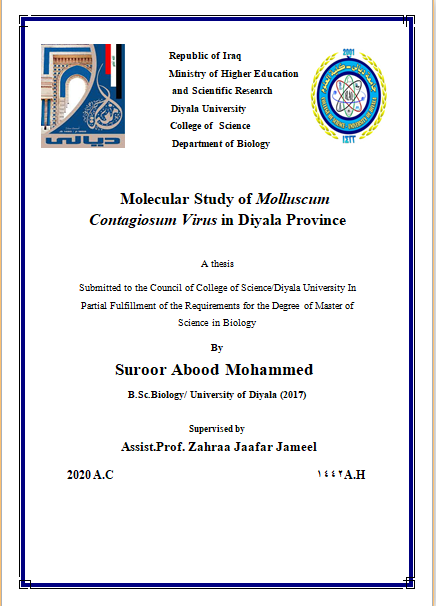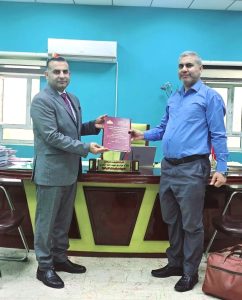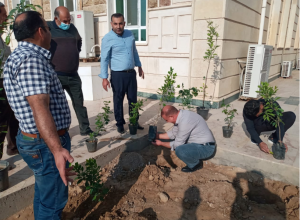Abstract
Molluscum contagiosum virus (MCV) was a self-limited infectious dermatosis, prevalent in the pediatric population, sexually active adults and individuals with immunocompromization. MCV was a double strand DNA virus that belongs to the Poxviridae family. The aims of the study were to molecular detection and sequencing of MCV genes by PCR from clinically suspected cases, exploration of the prevalent local MCV variants and compare it with global strans, Distribution of molecular detection according to socio-demographic and other contributing factors.
The study was conducted in outpatient clinics of Dermatology in Diyala province between 30 September 2019 to 21 June 2020. The ages ranged from 1 to 60 years and from both sexes, and the biopsy were 100 skin biopsy divided into two groups : 75 skin biopsy for patients and 25 skin biopsy as a control group healthy people. All patients were clinically diagnosed. After whole genome detection, specific primer was employed by conventional polymerase chain reaction (PCR) then sequencing.
The results also showed that the infection rate in males and in females approximatly similar 50.7% and 49.3% respectively.The results of the study showed that the highest incidence of infection with MCV using conventional PCR for lesion samples was 53.3% in the age group 1-10 year and the lowest incidence was in the age group 51-60 year at 4%.
The results revealed an increase in the incidence of MCV infection in the urban 66.6% compared to the rural, where it reached 33.3%. The results showed that MCV lesions were more located in the upper part of body (face) 96%, versus 4% in the lower in the lower part of body. With regard to patients with MCV associated with other diseases, the results of the current study showed that the highest rate of infection with the MCV was in patients with influenza virus infection 36%, followed by patients with eczema about 18.7% and the lowest rate was in patients with thalassemia 1.3%. whereas, the rate no concomitant disease in patients with only MCV was 44%.
The results of the PCR technique for detection of MCV were 75, clinically suspected skin biopsy for patients with MCV and 25 skin biopsy from healthy individuals by using special primer showed 7 samples with specific bands at 393bp (9.3%) while 3 samples with specific bands at 393bp and nonspecific bands at 300bp (4%) while second primer showed all band corresponding to 167bp.
Sequence analysis PCR product with 393bp for MC021L gene was done in 7 isolates that were divided into two groups: The first group included the isolates 24,36 and 70 and the second group included the isolates 4,10,16 and 38 of the MCV. When comparing each of these groups with the global isolates at the National Center Biotechnology Information (NCBI), it was found that the match rate was 100%. Regarding the MC002L gene, the results of sequence analysis with 167bp were showed in 5 isolates that were divided into two groups: the first group included isolates 1,2,3 and 5, and the second group included isolate 4 of MCV. When comparing each of these groups with the global isolates in NCBI it was found that the matched rate was 97%. The isolates in this gene have a silent mutation due to the change of one amino acid.
Two isolates were recorded in the NCBI for the MC021L gene and the accession number for the registered isolates LC520237, LC520238 was obtained. Regarding the MC002L gene, two isolates were also registered in the NCBI and the accession number of the registered isolates LC520235, LC520236 was obtained.




